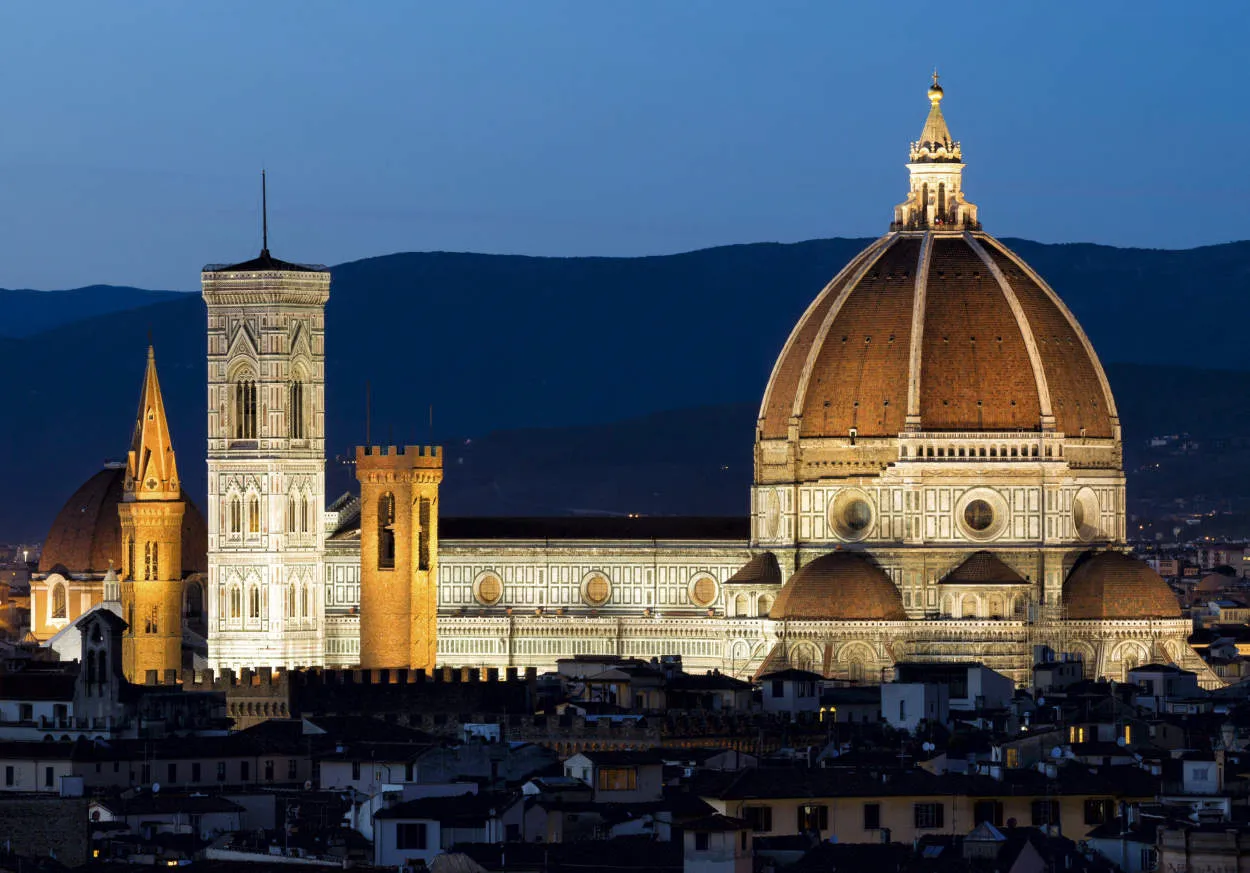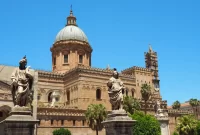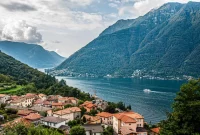Experience the beauty of Florence, the birthplace of the Renaissance, and immerse yourself in a world of artistic masterpieces. From the iconic works of Michelangelo’s David to the mesmerizing frescoes of the Duomo, prepare to be captivated by the rich cultural heritage of this enchanting city in Italy.
The Duomo and its Magnificence
The Duomo, also known as the Cathedral of Santa Maria del Fiore, is one of Florence’s most magnificent artistic masterpieces. Standing tall in the heart of the city, it is a symbol of the Renaissance era and an architectural marvel that continues to captivate visitors from around the world.
Designed by Filippo Brunelleschi and completed in the 15th century, the Duomo’s dome is a true engineering feat. It is the largest masonry dome ever built and is adorned with beautiful frescoes by Giorgio Vasari and Federico Zuccari.
Visitors can admire the intricate detail of the exterior, with its elaborate marble facade and stunning bronze doors crafted by renowned artists such as Lorenzo Ghiberti and Andrea Pisano. The interior is equally impressive, featuring magnificent stained glass windows, intricate sculptures, and breathtaking frescoes.
For those seeking a truly immersive experience, climbing to the top of the Duomo is a must. The climb is challenging but rewarding, offering breathtaking views of Florence’s rooftops and the surrounding Tuscan landscape.
In addition to the main dome, the Duomo complex includes the Baptistery of St. John, with its famous Gates of Paradise, and Giotto’s Campanile, a masterpiece of Gothic architecture. Together, these structures form a harmonious ensemble that embodies the artistic brilliance of the Renaissance.
As you explore Florence’s artistic masterpieces, the Duomo stands as a testament to the city’s rich cultural heritage and the timeless beauty of Renaissance art and architecture. It is a must-visit destination for any art lover or history enthusiast, offering a truly unforgettable experience.
The Uffizi Gallery: A Visual Feast
The Uffizi Gallery, located in Florence, Italy, is a true testament to the city’s rich artistic heritage. It houses an impressive collection of masterpieces from the Renaissance period, making it a must-visit destination for art enthusiasts and history buffs.
One of the main highlights of the Uffizi Gallery is its extensive collection of paintings. Works by renowned artists such as Michelangelo, Leonardo da Vinci, and Botticelli adorn the walls, showcasing their extraordinary talent and skill. Visitors can marvel at iconic pieces like Michelangelo’s “Doni Tondo,” da Vinci’s “Annunciation,” and Botticelli’s “The Birth of Venus.”
In addition to paintings, the gallery also exhibits exquisite sculptures, intricate tapestries, and ancient Roman artifacts. The variety of art forms on display provides visitors with a comprehensive artistic experience.
As you wander through the gallery’s halls, you’ll be captivated by the grandeur of the space itself. The building, designed by Giorgio Vasari in the 16th century, features magnificent architecture and stunning frescoes. Its grand windows offer breathtaking views of the city, adding to the overall allure of the Uffizi Gallery.
To fully appreciate the Uffizi Gallery, it’s advisable to plan your visit in advance. The museum is known for its long queues, so purchasing tickets online or opting for a guided tour can save you valuable time.
Visiting the Uffizi Gallery is like stepping back in time and immersing yourself in the beauty of the Renaissance. From the masterful paintings to the awe-inspiring architecture, this cultural gem offers a visual feast that will leave you in awe.
The David: Michelangelo’s Iconic Sculpture
In the heart of Florence, Italy, stands one of the most celebrated artistic masterpieces of the Renaissance: The David. This iconic sculpture, created by the legendary Michelangelo, leaves visitors in awe with its sheer grandeur and breathtaking beauty.
Carved from a single block of marble, The David is a magnificent portrayal of human strength and virtuosity. Standing at over five meters tall, the sculpture captures the essence of ancient Greek and Roman art, displaying Michelangelo’s extraordinary attention to detail and mastery of the human form.
The sculpture’s creation dates back to the early 16th century when Michelangelo was commissioned to transform a rough marble block into a representation of the biblical figure of David. The artist’s ability to breathe life into stone is evident in the sculpture’s dynamic pose, with David poised in a moment of intense concentration before his legendary battle with Goliath.
Aside from its technical brilliance, The David is also a testament to the symbolism and cultural significance it embodies. It represents the city of Florence’s pride and power during the Renaissance period, as well as Michelangelo’s own artistic genius. Moreover, the sculpture has become a worldwide symbol of beauty, elegance, and the enduring spirit of human creativity.
When visiting Florence, experiencing The David is an absolute must. The sculpture’s remarkable craftsmanship and historical significance make it an integral part of any art lover’s journey through the Renaissance period. As you gaze upon The David, you will find yourself transported to a time of unrivaled artistic brilliance and a profound appreciation for the boundless capabilities of human imagination.
Conclusion
Florence, with its rich history and vibrant art scene, offers a truly immersive Renaissance experience. From the breathtaking Renaissance artworks found in the city’s numerous museums and galleries to the stunning architecture that adorns its streets, Florence is a haven for art lovers. Exploring the masterpieces created by renowned artists such as Michelangelo, Leonardo da Vinci, and Botticelli provides a glimpse into the genius of the Renaissance era. A visit to Florence is a must for anyone seeking to be captivated by the beauty and grandeur of this remarkable period in art history.




